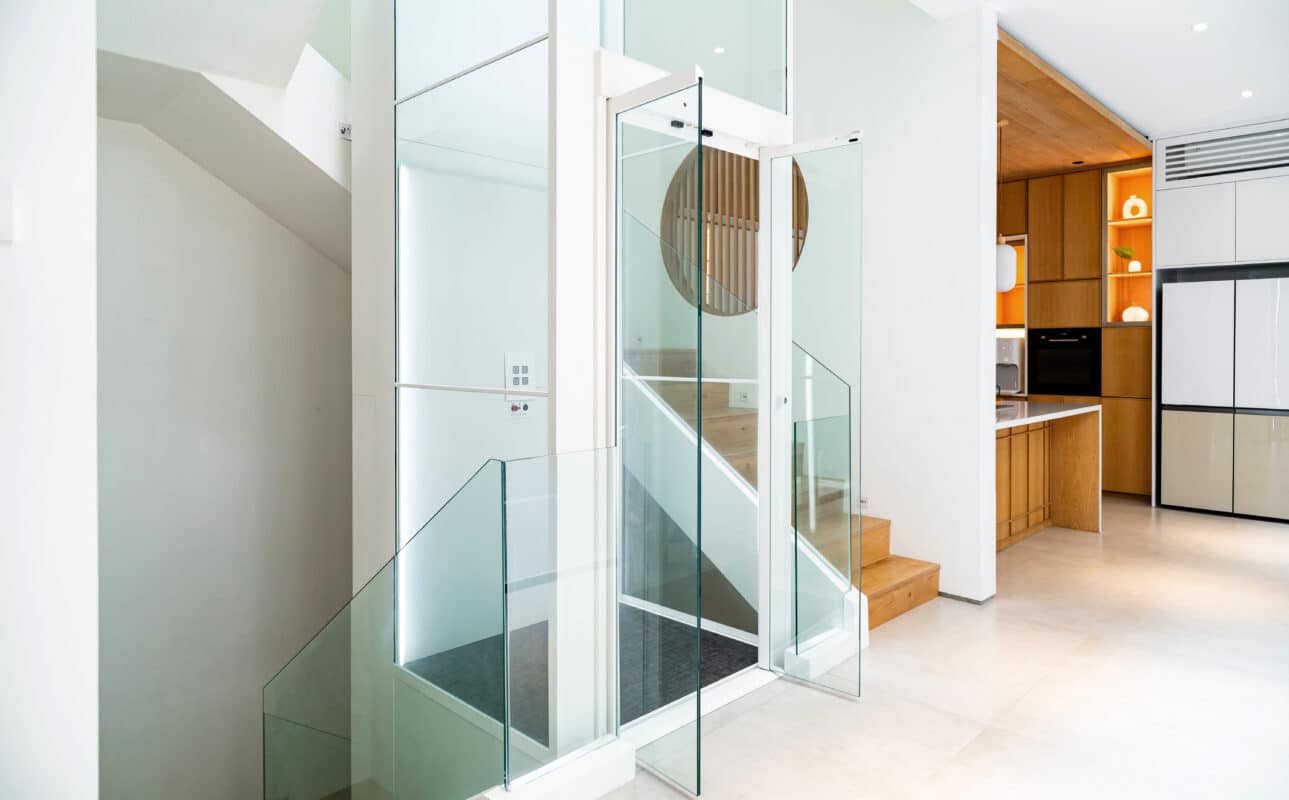What is the Cost of a Hydraulic Lift for Homes?
Although SWIFT does not manufacture or sell hydraulic lifts, many homeowners ask about their hydraulic elevator cost and why hydraulic lifts are generally not recommended for private residences.
What is a Hydraulic Elevator?
Hydraulic elevators operate using a hydraulic cylinder filled with oil to move the cabin up and down. They were once a popular choice for budget-friendly home lifts because they require fewer mechanical components and are relatively simple to install. However, there are several considerations to keep in mind:
- Speed and Capacity: Hydraulic lifts tend to be slower and usually have a lower weight capacity compared to other home elevators.
- Design for Public Use: Many hydraulic lifts are designed for commercial or public buildings, not private homes.
- Oil Tank Requirements: A hydraulic lift needs space for an oil tank, and potential oil leakage is a long-term maintenance concern.
More about hydraulic elevators can be found here >>

Cost of a Hydraulic Lift for Homes
The hydraulic elevator cost varies based on several factors: type of lift, size, weight capacity, and included features.
- Basic Models: Entry-level hydraulic lifts for residential use start at around $10,000.
- Advanced Models: Lifts with larger weight capacities, multiple doors, or additional features can cost $25,000 or more.
Factors That Affect Hydraulic Lift Pricing
- Lift Type: Standard vs. premium models, single-door vs. dual-door designs.
- Size and Weight Capacity: Larger cabins or lifts designed for wheelchair access cost more.
- Installation Requirements: Space for the oil tank, pit depth, and structural modifications add to expenses.
- Features and Finishes: Custom finishes, automatic doors, and safety features increase the total cost.
- Maintenance: Hydraulic lifts require periodic checks and servicing of oil and mechanical components.
Considerations Before Choosing a Hydraulic Lift
While hydraulic elevators can be cost-effective initially, their long-term maintenance, lower efficiency, and structural requirements make them less ideal for modern homes. Homeowners should evaluate total ownership costs, including:
- Regular servicing of the hydraulic system
- Oil replacements and leak management
- Repairs and part replacements
Conclusion
A hydraulic home elevator may seem like an affordable solution, but it comes with trade-offs in speed, capacity, and long-term maintenance. For modern residences, compact solutions like screw-driven lifts or pitless home elevators are often safer, more energy-efficient, and better suited to contemporary home designs.
For more on budget-friendly options for home elevators, read our guide: Which is the least expensive home elevator?










